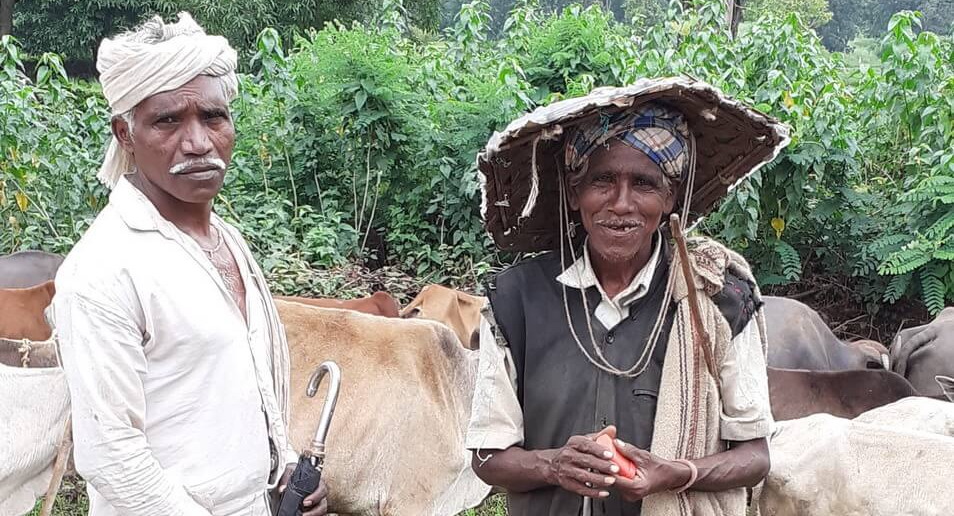
By Nishant Saxena[1], Arpit Maurya[2] and Shruti Singh Saxena[3]

We were amidst the Bhil tribe of Rajasthan – one of the most populous tribes of India – and facing scorching heat during our fieldwork in April and May. Facing the atrocities of harsh climate is one of the hurdles anthropologists face, often successfully, but barely evident in our writings!
As global warming continues to impact the world, the frequency and intensity of extreme weather events such as floods, droughts, and heatwaves have increased which have drastic consequences on humans and biodiversity. India saw the year 2023 ending as the second warmest on record since 1901, with the Indian Meteorological Department (IMD) noting that August and February 2023 were the warmest in the last 123 years (Ray, 2024). A very important study comes to cognizance by Azhar et al. (2017) which attempted mapping of heatwave vulnerability across the country and highlighted that districts with higher heat vulnerability are found in the country’s centre (i.e., Central India), particularly in less urbanised areas with low rates of literacy, lesser access to water and sanitation, and the scanty presence of household amenities. So, when it comes to coping with heatwaves, what about the tribes who are mainly concentrated in this part of the country and mostly exposed to low-resource settings? Mind you, India is home to about 104 million tribal population inhabiting almost all parts of the country.
We find that since time immemorial traditional knowledge of tribes, has been inseparable and intricate part of their culture has been coming to their rescue. Tribes behold extensive know-how about shelter and home architecture, clothing and personal protection, water management, dietary practices, traditional herbal knowledge and healing practices, to name a few. A vibrant example of this waning knowledge system is the use of traditional headgear like turbans, hats, or scarves to protect the head and face from direct sunlight. For instance, the Bishnoi tribe in Rajasthan wears turbans (safa or pagri or pagdi), usually white in colour, that serves both as a cultural symbol and as effective protection against the intense desert sun (Dashora & Srivastava, 2019; Choudhary & Qureshi, 2024). Likewise, ornamental accessories like large bamboo hats worn by the Konyak tribe in the northeast part of India not only showcase cultural identity but also protect from the sun. In consonance with the traditional knowledge of tribes, the recent strengthening of primary healthcare infrastructure in rural and tribal areas by the government has certainly been of some help when it comes to battling heatwaves. However, there is a long path to traverse.
Our view is that there is a dire need to aggregate more structured data on mortality and morbidities due to heatwaves, especially in tribal areas which are mostly far-flung and face resource crunch (Pandey, 2023). Furthermore, a helpful initial step in shielding the general people from the negative health effects of heat is the creation and mapping of a heat vulnerability index. Sub-district levels of susceptibility could be investigated, and data on heat exposure and health outcomes can be included in future research to validate the index. Furthermore, to make the health measures derived from indigenous tribal knowledge more widespread, beyond their immediate communities, several steps may be initiated. The first is a concerted effort to document and validate these traditional practices through scientific research to lend credibility and acceptability within mainstream healthcare systems. Then, IEC (information education and communication) programs could be developed to raise awareness in the public about the effectiveness of these traditional tribal practices in mitigating heatwave-related illnesses. Such efforts should involve tribal communities.
We believe that by combining research, education, community engagement, and policy advocacy, the age-old health measures of tribes can be more widely recognized and incorporated into broader healthcare strategies to benefit a larger population in India.
Conflict of interest: There is no conflict of interest.
Acknowledgement: The authors are indebted to the Director, ICMR-NIRTH, Jabalpur and the Director, Anthropological Survey of India, Kolkata, India for their continued support and encouragement.
Further readings:
References:
[1] Corresponding author: Nishant Saxena, ICMR, Madhya Pradesh, India.
[2] ICMR-National Institute of Research Tribal Health, Jabalpur, Madhya Pradesh, India.
[3] Department of Anthropology, University of Delhi, India; Anthropological Survey of India, Central Regional Centre, Nagpur, Maharashtra, India.
Disclaimer: The views expressed in this piece are those of the author/s and do not necessarily reflect the views or policies of AIDMI.